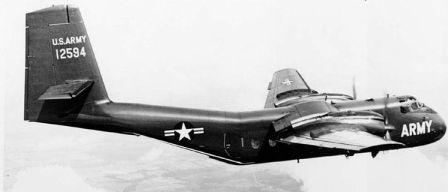DeHavilland DHC-4 Caribou
The Caribou is not a common aircraft and like the Yak-40, is included here more for interest, than as a plane one might seriously consider for the bush. It is a consummate bush plane, but its size and complexity not only keep it from being operated by individuals. It has not been widely accepted by commercial operators either.

If individuals and commericial operators don't fly the Caribou, there's really only one other operator left, and that's the military. It was with various military forces that the Caribou found its home. It could carry two jeeps or 32 paratroopers. Most have been retired from the United States armed forces, some still soldier on with the Royal Australian Air Force (RAAF). The United States Army (and Air Force) used the Caribou as specialized cargo aircraft, referring to it as CV-2 and C-7 Caribou, to serve airfields too small for the C-130 or C-123.

The Royal Canadian Air Force acquired nine Caribou transport Aircraft in 1960. The Caribou's primary role was transport flying, and it saw action overseas in many United Nations (UN) missions. The depicted Aircraft at the top of the page was destroyed during a UN mission in India when it was strafed on the ground by a Pakistani Air Force fighter. Originally the deHavilland Caribou was fitted with Pratt & Whitney Twin Wasp engines. Some later models were fitted with turboprop engines.
The Caribou was first flown in 1958 and although mainly retired from military operations, is still in use in small numbers as a rugged "bush" aircraft.
Watch this video tribute to the DeHavilland Caribou.
The DeHavilland Canada DHC-4 Caribou in the next video was flown by the Royal Australian Air Force between 1964 - 2009. The video was filmed at Classic Fighters 2009, at Omaka Aerodrome, Blenheim, New Zealand.